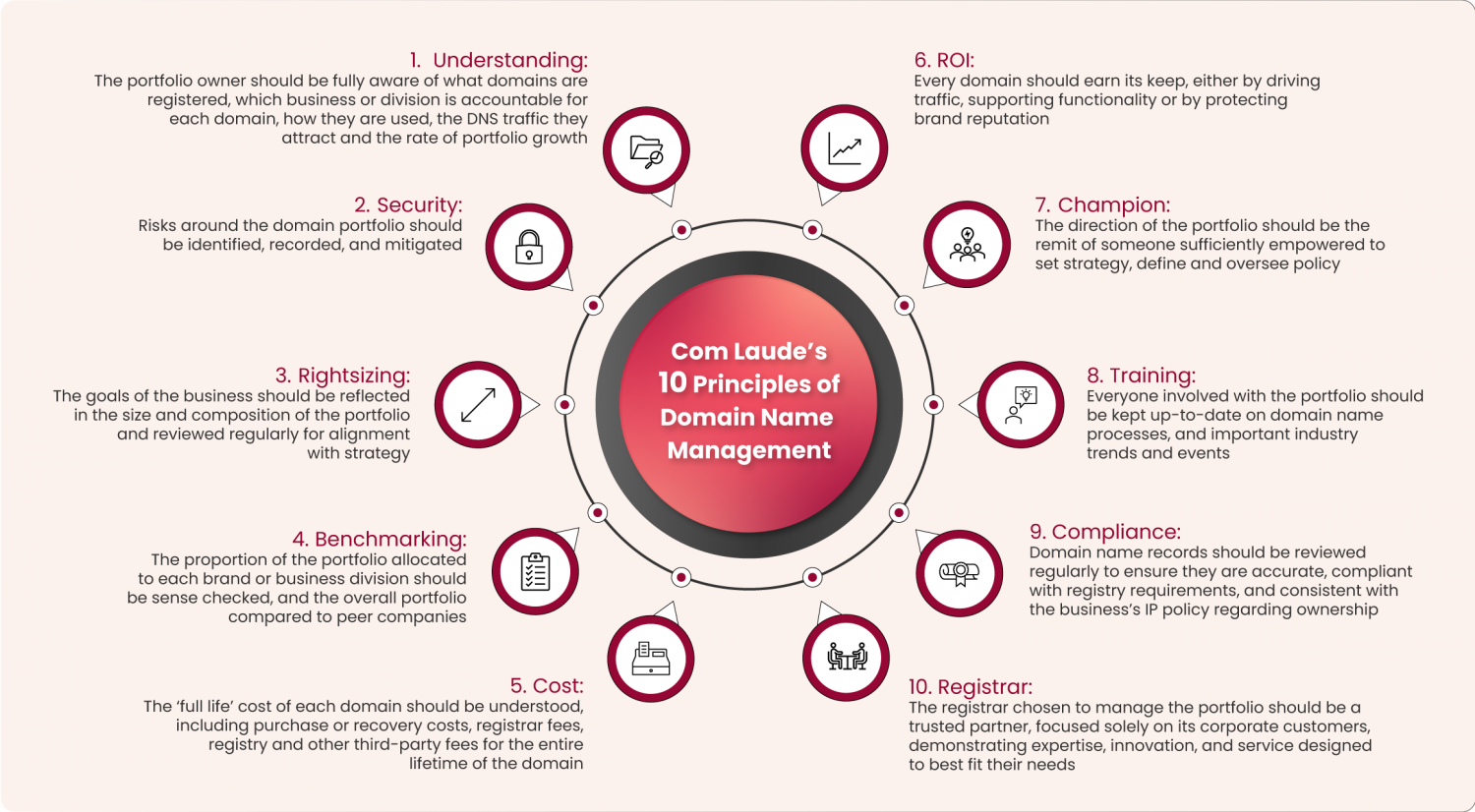Com Laude’s Principles of Domain Name Portfolio Management
Over the past 25 years, the fundamental actions required to create a domain name have barely changed: request a registry to add a name to its database and publish it in the zone file; pay any fees due; point the domain to a website or email server as needed. The mechanisms around these tasks have evolved of course, with EPP supplanting email forms, increased security measures by way of domain locking and authcodes, and formalised dispute mechanisms replacing earlier court actions. But many registrars are indolently looking after their registrants just as they might have done five, ten or twenty years ago.
Com Laude has always treated domain names as being at the intersection of IP and IT. Whilst maintaining technical excellence, we have consistently focused on what good portfolio management means over and above the practical ‘hygiene factors’ of maintaining domains. Our constant question to ourselves is ‘how can we ensure that this client’s portfolio is optimally structured and managed to help achieve strategic and commercial goals?’.
To help us answer that question, we’ve formalised ten basic principles of effective portfolio management. These have been designed to help us and our clients recognise what’s working well, identify areas for improvement and embed best practice into every domain name team. They are applicable to all domain portfolios, irrespective of size or sector.
They are:

Now that we’ve gone public with these principles, how long before they are copied by other registrars? We don’t mind because if they become best practice, the DNS will be a better place for brands, and that’s our goal.